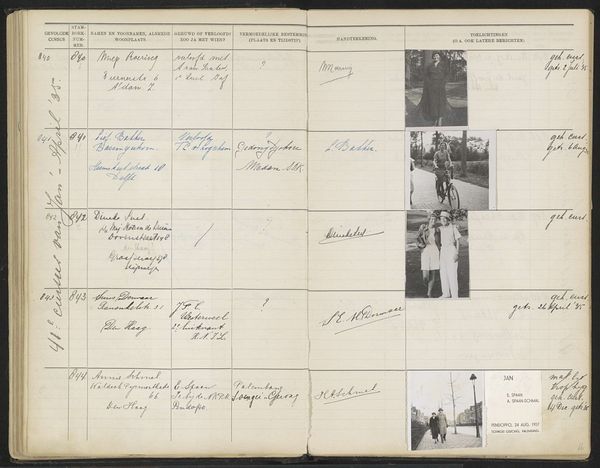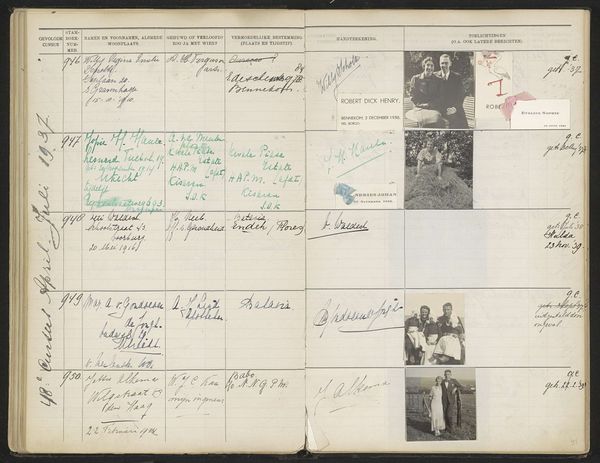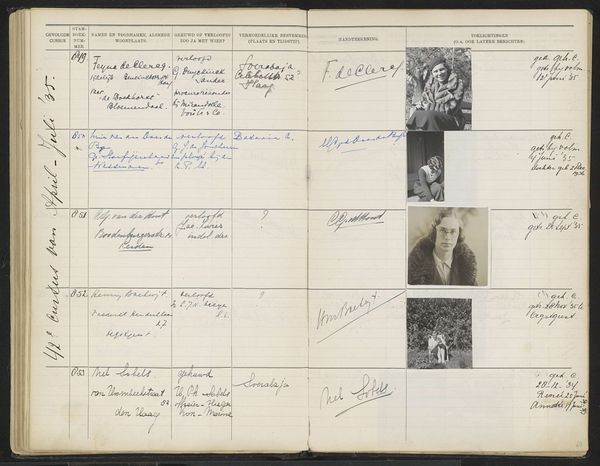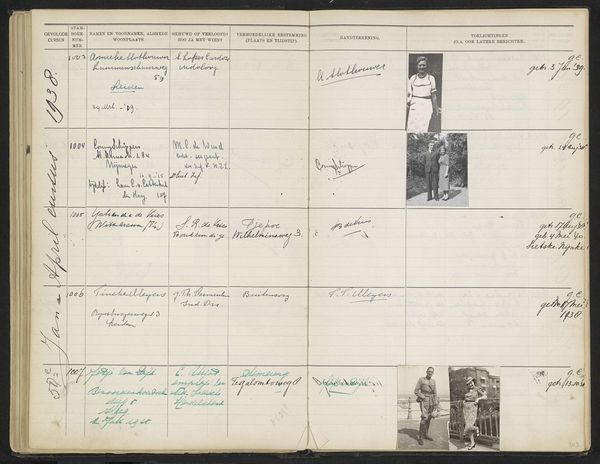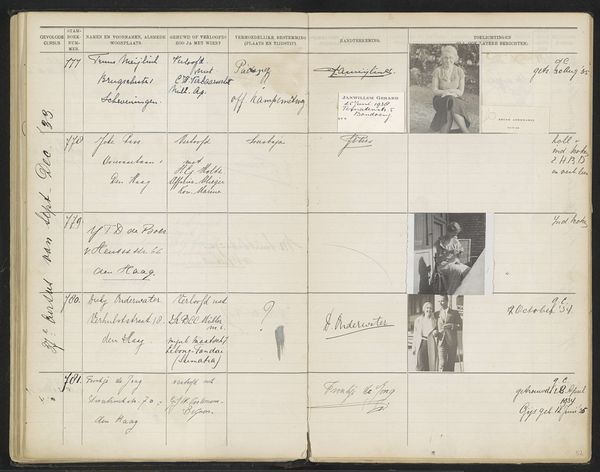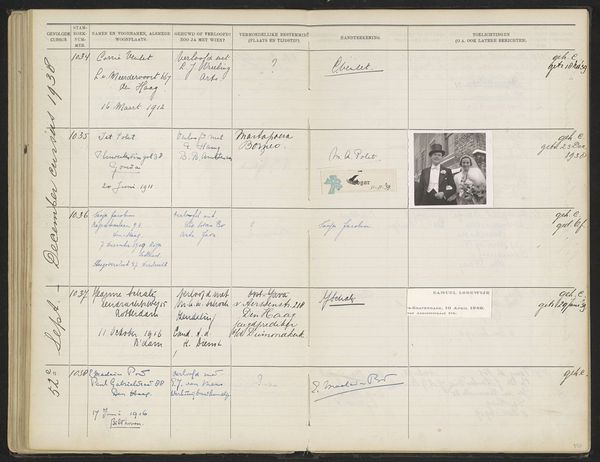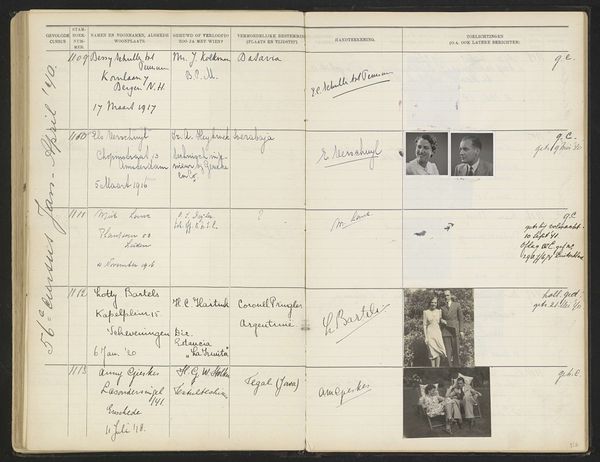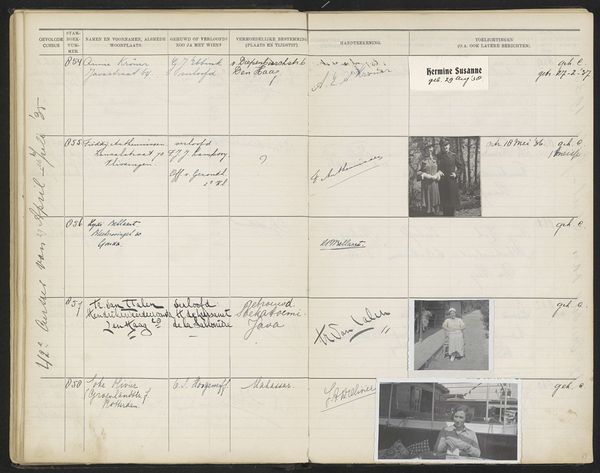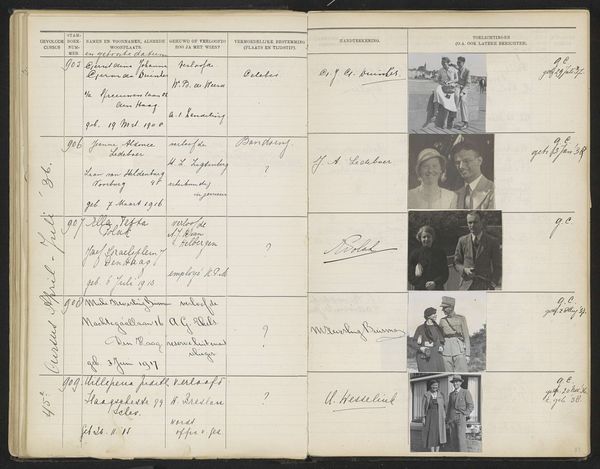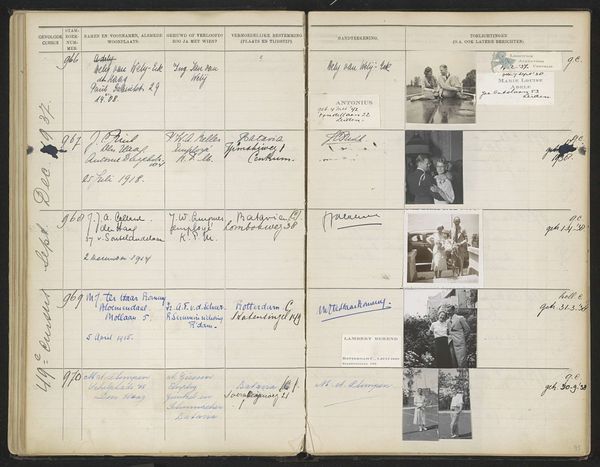
Blad 41 uit Stamboek van de leerlingen der Koloniale School voor Meisjes en Vrouwen te 's-Gravenhage deel II (1930-1949) Possibly 1932 - 1938
0:00
0:00
paper, photography
#
portrait
#
aged paper
#
sketch book
#
hand drawn type
#
paper
#
photography
#
personal sketchbook
#
hand-drawn typeface
#
journal
#
sketchbook drawing
#
handwritten font
#
storyboard and sketchbook work
#
sketchbook art
Dimensions: height 337 mm, width 435 mm
Copyright: Rijks Museum: Open Domain
Curator: This document, entitled "Blad 41 uit Stamboek van de leerlingen der Koloniale School voor Meisjes en Vrouwen te 's-Gravenhage deel II (1930-1949)," appears to be a page from a registry, potentially from the 1930s. The medium involves paper and photography. Its structure seems to detail records of students, listing names, origins, and perhaps marital status. Editor: It gives me the shivers! Something about the tight script and formal layout evokes a sense of institutional control. It's also strangely intimate—snapshots interspersed with official records hint at the lives lived within this colonial framework. Curator: Precisely. It's the tension between the individual and the institution that I find compelling. The very materiality of the page—the aged paper, the ink—speaks of bureaucracy. Notice how each entry follows a structured format. Editor: But there are cracks in the façade. Look at the photographs – these glimpses of daily life disrupt the sterile grid. Someone cared enough to preserve these faces and moments, adding another layer to these individual narratives. I wonder about the stories behind them? Curator: Yes, consider the means of production. This ledger likely involved multiple hands—from those gathering the data to the administrators recording it. Each step represents a social transaction, revealing the mechanisms of power at play within the school and within a broader social system. We can think of labor distribution based on gender and other criteria within this community as we view these images. Editor: The hand-drawn typefaces used are beautiful, but also contribute to the almost suffocating order. Perhaps even the handwritten aspect highlights the human involvement, a silent acknowledgment of personal touch embedded in bureaucratic monotony. Curator: This object serves as a window into the workings of a colonial school, providing insights into social history, documentation processes, and the ways individual lives were framed within the larger colonial project. This kind of resource opens multiple interpretive angles, as a sort of data-capture technique to record the facts of a community of individuals. Editor: It's a potent reminder that history isn't just about grand narratives, but also about these quiet records and personal stories found even in unexpected places. It gets me thinking about who *made* this book too. Curator: A solid reflection that considers how historical documentation occurs.
Comments
No comments
Be the first to comment and join the conversation on the ultimate creative platform.
